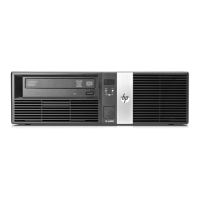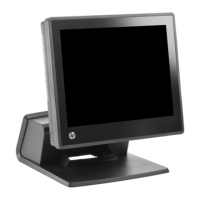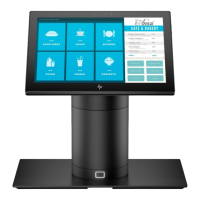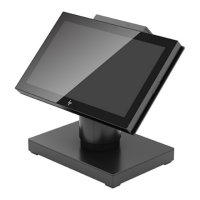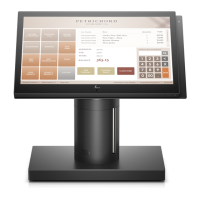Data
Communications
RecvPl!lce
Xm1tPl!lce
SRRXm1t
SRRlnvert
BufS1ze
7-10
Table
7-4.
Point-to-Point Configuration Menu Fields (Continued)
Reeeive pacing is a mechanism by which ·the terminal automatically
controls
(halts and resu mes)
the transmission
of
data from
the
remote device. There are
two
means
of
performing receive
pacing: by manipulating the state
of
the
RS-232C Data Terminal Ready (TR) control line or by using
XON
and
XOFF
control codes.
If this field is set
to
"NONE",
then
the
terminal will NOT perform receive pacing.
HARDWIRED ONLY:
If
this field is set
to
"TReCD)",
then the terminal will automatically perform receive pacing using the
Data
Terminal Ready (TR) control line. With this type
of
receive pacing, the terminal causes
the
remote device
to
halt transmission by lowering the
TR
line and
to
resume transmission by raising
the
TR
line. For this
type
of
receive pacing
to
work, the remote device
must
of
course be configured
to
start and stop transmission based on the state
of
the TR control line from the terminal.
FULL DUPLEX
ONLY:
If this field is set
to
"XonXoff",
then the terminal will automatically perform receive pacing using
XON
(ASCII <DC1») and
XOFF
(ASCII <DC3») control codes. With this
type
of
receive pacing,
the
terminal causes the remote device
to
halt transmission by sending an XOFF code and
to
resume
transmission by sending
an
XON
code. For this type
of
receive pacing
to
work, the remote device
must
of
course be configured
to
start
and stop transmission in response
to
XON
and
XOFF
codes.
Note that
if
the remote device recognizes
XON
and
XOFF
codes and
your
terminal is operating in
character mode, you can issue them
through
the keyboard regardless
of
the setting of this field.
The"
and Q keys (when pressed simultaneously) generate an
XON
code and
the"
and S keys
generate an
XOFF.
Values:
NONE
TReCD)
XonXoff
Transmit pacing is a mechanism by which the remote device can control (stop and resume)
the
transmission
of
data from the terminal.
(
If enabled, transmit pacing is performed using
XON
and XOFF control codes. When the terminal (
receives an
XOFF code (ASCII <DC3»),
it
stops transmitting data. When the terminal subsequently _
receives an
XON
code (ASCII
<DC1»),
it
resumes transmitting data. This should not be used with
DC1/DC2 handshaking.
If this field is set
to
"NONE",
the
terminal does NOTrecognize the ASCII
<DC1)
and
<DC3)
codes as
XON
and
XOFF.
For other forms
of
transmit pacing refer
to
the descriptions
of
the SRRXmit and CS(C8)Xmit fields
below.
Values:
NONE
XonXoff
This field specifies whether
or
not
a true state
(-12
V)
on the RS-232C Secondary Receiver Ready
(SRR) or Secondary Carrier Detect (SCF) control line is a required
condition
for
transmitting data.
This mechanism is primarily used in conjunction with printers which must be
able
to
control the
transmission
of
data from
other
devices. The SRRlSCF control line is connected
to
RS-232C pin
number 12.
Values:
YES
NO
Thisfield applies only when the SRRXmi t field is set
to
"YES".
When
both
the
SRRXm1
t and
SRRlnvert
fields are set
to
"YES",
the
true
state
of
the RS-232C Secondary Receiver Ready (SRR) or Sec-
ondary Carrier Detect (SCF) control line is inverted from
-12
V
to
+12
V.
Values:
YES
NO
This field specifies the size (in characters)
of
the receive buffer. The allowable range is 128
to
255.
Note that the space
for
data comm buffers is taken from display memory. The greater the
BufS1ze,
the less memory is available
for
display memory. Also note that
if
you increase
the
data comm
buffer
size when subsequently reconfiguring the port, all
of
display memory is automatically
reconfigured resulting in the loss
of
all existing screen data.
Values: Any integer from 128
to
255.
-----
---
-
~---.---
(
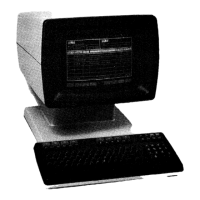
